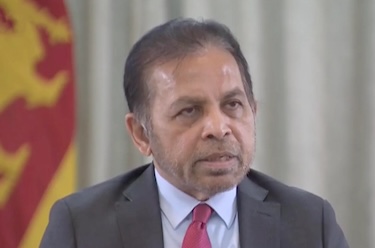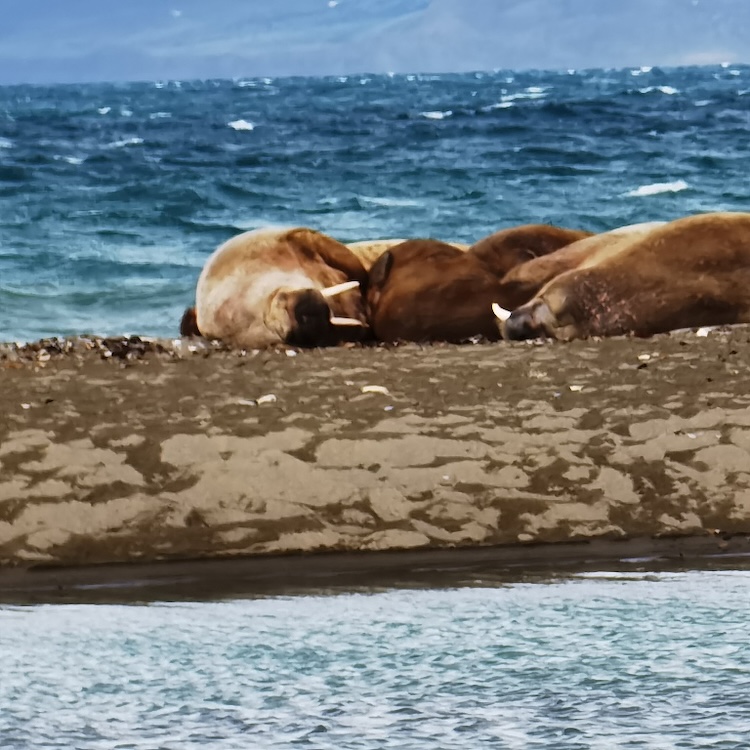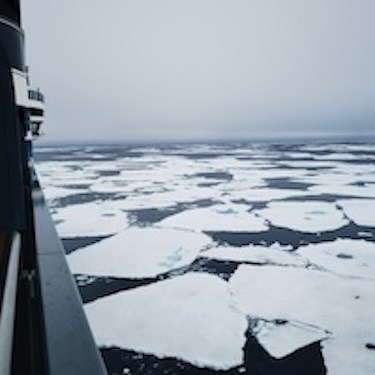By Dr Palitha Kohona*
OSLO, Norway | 24 July 2024 (IDN) — A few days in Norway’s summer swept capital Oslo, on the way to the Arctic via Tronso with an expedition ship presented a mixed bag of surprises. Contrary to expectations, Norway was not full of rich, blonde or red haired and blue eyed Vikings.
They were there but today the ethnic mix of Oslo was surprising with a noticeable presence of Middle Eastern, African, Sub continental, Latin and other non-Scandinavian types adding colour to the ethnic landscape. Environmentally uber sensitive, Oslo itself is clean and green and is served impressively by a network of clean blue electric trams. Modern and architecturally daring tall buildings mix comfortably with well-preserved old timber mansions.

The warm weather drives the people out into the well maintained open green spaces in droves and there are many of these spaces. Others crowd the street-side bars and open air arenas screening football games. The once conservative, Lutheran, Norwegians are anything but conservative now. Ultra Modernity mixes with Conservative charm in this country.
The environment has been a priority concern for the Norwegians despite the fact that its impressive wealth is derived in significant proportion from the exploitation of fossil fuels. The countryside is pristine, clean and green. The further north in this long country one ventures, the landscape and the people change. The pastel green of the summer enveloping the south yields to more somber colours. The once marginalised Sami and their culture become more evident. The reindeer, culturally and economically important to the Sami, begin to dot the bleak, cold and eerie landscape.

Bleak Nordkapp (North Cape) is 300 miles above the Arctic Circle and is the northernmost human settlement in Europe. Since 1664 it has been a premier sailing jump off point in the entire region and a critical strategic location. The German battle ship, Scharnhorst was sunk by the British navy during the Battle of Nordkapp in 1943.
Royal family
Nordkapp has seen its share of Royal visitors, (King Oscar in 1873 and King Chulalongkorn of Thailand in 1907). It enjoys daylight for almost 23 hours.
Norway’s present royal family, installed in 1905 on the dissolution of the union with Sweden, occupies a respected position today, although it does not enjoy the grand trappings of its relatives to the South, the British royals. Norway had been the junior partner in a political union with Denmark since 1380. The Union was dissolved in the aftermath of the Napoleonic wars in 1814 but was subsequently compelled in to a union with Sweden until its dissolution in 1905.
The king, Haakon VII, elected in 1905, came from the House of Glucksburg in Denmark. The royal family has had its share of headline grabbing scandals but remains popular. The family still owns extensive real estate in Oslo and elsewhere and occupies an impressive palace overlooking the city. The beautiful flower gardens, the ancient trees and manicured lawns are a haven after days walking along the clean and paved sidewalks basking in the summer sun.

Having been named the most expensive city in the world just ten years ago, Oslo has slipped down in the rankings. But Oslo and other Norwegian cities remain very expensive. Norway is a rich country with a GDP per capita of USD 106,000. Its wealth coming from oil and gas, mainly from the seabed, sea food, tourism and modern technology. Sea food exports accounted for 21% of exports in 2022 but harvesting the seas is coming under increasing pressure from environmental groups and increasing EU regulation.
The value of gas exports has risen substantially since the NATO confrontation with Russia. With increasing restrictions on the fishing industry in Norway and elsewhere in Europe, opportunities emerge for collaboration with Norway with its advanced technologies for countries like Sri Lanka.
Tourism, despite the high costs, is providing a major boost to the economy. Norway caters impressively to the large influx of tourists from around the world, including from the Far East. The clean, punctual and frequent electric rapid train service from the airport, the modern fleet of electric taxis, the range and variety of hotels and restaurants, all cater to the multitudinal needs of the many tourists.
There is no suggestion of lowering prices to cater to the cheap end. On the contrary prices are kept high. Cruise liners with their well healed passengers call on Norwegian ports in increasing numbers. Many Arctic cruises use Tronso as the jump off point and it has become a boom town now. Surprisingly, many cruise passengers are retirees, some pushing the eighties.
Stricter rules are beginning to be applied to visitors interacting with wild animals and birds. Zodiacs leaving the cruise ships are not permitted to approach within 500 meters of any wild birds and animals. Large groups of walruses lounge on the bleak shore undisturbed by the hundreds of camera wielding excursioners and who are kept a respectful five hundred meters away by vigilant staff. Large colonies of puffins, gannets and sea eagles are a major attraction. The rule is strictly enforced and tour groups comply. Failure to so would result in hefty fines.

In earlier times, Norwegian and other Arctic explorers also set off on their arduous quests into the frozen unknown from Tronso. Then, nobody really knew what lay in or beyond the frozen polar ice cap. Fridjoff Nansen and Roald Amundsen among them. Amundsen was also the first person to reach the South Pole. He also flew over the North Pole in an airship.
Svalbard was once a key centre of whaling and sealing where many nationalities competed in this bloody and gruesome trade. Rusting equipment used then remains scattered. Some animals were brought to the edge of extinction but now numbers appear to be recovering due to the strict controls. About 7000 polar bears still remain but are threatened, inter alia, by the melting ice cap. Glaziers are visibly on the retreat everywhere.
Under the Spitsbergen Treaty of 1920 the sovereignty Svalbard was given to Norway and it has been with Norway since. But other countries with a commercial interest were permitted to use its resources. Russia operates a coal mine in Svalbard, but relations with Norway have plunged in recent times and we are beginning to witness mutual acts designed to irritate each other.
While relations involving the frozen north have been without incident so far, all states bordering the polar ice cap have established claims to their respective Exclusive Economic Zones. It will be the prospective claims to the extended continental shelf that might cause friction, especially with the discovery of precious rare earth in the sea bed.
Russia once planted its flag under the polar ice cap and has lodged its claim to the polar continental shelf with the UN Continental Shelf Commission. In a contribution to humanity, Norway hosts the global seed bank at Svalbard where agricultural seeds from around the world are stored for posterity.
Norway’s wealth and liberal attitudes, and perhaps a belief that it would be trusted as a peace broker, encouraged it to insert itself as a peacemaker in different conflict situations around the world. In Palestine, South Sudan, in Sri Lanka, etc. As to whether Norway’s efforts produced the peace that it imagined it could in any of these situations will be debated for a long time, including by the Norwegians.
The leaders of the PLO and Israel were even awarded the Nobel Peace Prize following the Oslo Accords. The Oslo Accords are not even a distant shattered memory as thousands die and many more are maimed in Gaza today. Sudan, divided into two, continues to simmer as the main causes of the conflict remain unaddressed. In Sri Lanka, no peace eventuated, despite a Norwegian brokered ceasefire agreement in 2002, forcing the government to take measures to eliminate the terrorist threat using military force. Perhaps Norwegian peace efforts were doomed to failure due to their Euro centric thinking and approach.
The Nobel Peace Prize is awarded by the Norwegian Nobel Committee, while the other Nobel prizes are awarded by the Royal Swedish Academy of Sciences, the Swedish Academy, and the Karolinska Institute.
*Dr Palitha Kohona is a former Permanent Representative of Sri Lanka to the United Nations, and until recently Ambassador to China. [IDN-InDepthNews]
Photo: The Nobel Peace Center in Oslo. CC BY-SA 4.0


